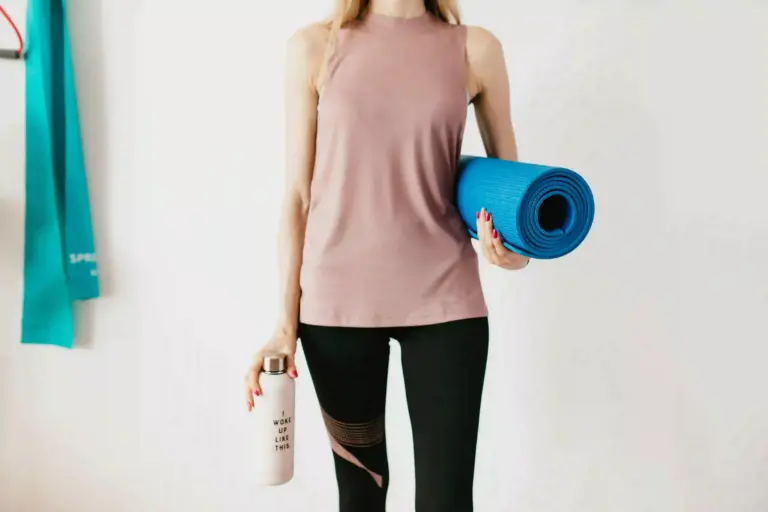As society becomes more aware of the impact of our actions on the environment, individuals are increasingly seeking ways to reduce their ecological footprint. Known for its resource-intensive practices and massive waste, the apparel industry has been criticized for its adverse effects on the planet. However, a new trend has emerged in recent years – the rise of eco-friendly sportswear.
We will introduce you to the concept of eco-friendly sportswear, studying its environmental benefits, technological advancements and growing popularity among consumers. After reading, you will have a comprehensive understanding of its importance in creating a more sustainable fashion industry and adopting a more eco-friendly lifestyle.
The environmental impact of traditional sportswear
Sportswear is an essential part of our daily lives, providing comfort and functionality for a variety of physical activities. However, the production of traditional sportswear has a significant negative impact on the environment.
One of the main problems with the production of traditional sportswear is the heavy use of unsustainable materials. These materials are derived from fossil fuels. The extraction and processing of fossil fuels contribute to greenhouse gas emissions and climate change. The production of synthetic fibers also requires a lot of energy, further exacerbating the environmental impact. The production of these synthetic fabrics releases harmful chemicals into the environment. These chemicals are used to improve the performance and durability of sportswear. However, they are associated with a variety of health problems, including reproductive problems and hormonal disorders. The handling of sportswear made from synthetic materials can also lead to the release of microplastics into water bodies, posing a threat to marine life.
Another significant environmental problem associated with the production of traditional sportswear is excessive water use. The textile industry is known for its high water consumption throughout the manufacturing process, including fabric production, dyeing, and finishing. It is estimated that it takes about 2,700 liters of water to produce one t-shirt. This process of water consumption puts enormous pressure on freshwater resources, especially in areas that are already facing water scarcity. In addition, the dyeing process of sportswear can cause water contamination. Chemical dyes often contain heavy metals and toxic substances and are used to achieve vibrant colors in sportswear. However, untreated wastewater from dyeing plants is often discharged directly into rivers and streams, polluting water sources and harming aquatic ecosystems. Pollution from chemical dyes not only affects biodiversity, but also poses a threat to human health as these chemicals enter the food chain.
What is eco-friendly sportswear?
Eco-friendly sportswear refers to clothing and accessories that are designed and produced with a focus on minimizing the negative impact on the environment. It covers all aspects, including the use of sustainable materials and the reduction of waste.
The materials used in eco-friendly sportswear are sourced and produced to minimize harm to the environment. This includes the use of organic cotton, recycled polyester and bamboo. These materials are renewable and biodegradable. These materials have a lower carbon footprint compared to traditional fabrics.
In general, sustainable materials used in eco-friendly sportswear include:
Organic cotton: The cultivation method of organic cotton eliminates the use of synthetic fertilizers, pesticides, and genetically modified seeds. It relies on natural farming practices that promote soil health, biodiversity, and water conservation. Organic cotton does not contain harmful chemicals and is safer for both the environment and the people involved in production.
Recycled polyester: Recycled polyester is made from post-consumer plastic bottles and other discarded polyester products. The process involves collecting, cleaning, and processing waste into new polyester fibers. By using recycled polyester fibers, eco-friendly sportswear reduces the need for virgin polyester production, which has a high carbon footprint and contributes to plastic pollution.
Bamboo: Bamboo is a fast-growing, renewable resource that requires minimal water and pesticides to grow. It can be processed into a soft, breathable, moisture-wicking fabric that is perfect for sportswear. In addition, bamboo has natural antimicrobial properties, reducing the need for chemical treatments in the production process.
Reducing waste is an essential aspect of eco-friendly sportswear production. By minimizing waste throughout the manufacturing process, companies can conserve resources, reduce pollution, and reduce their environmental impact. This can be achieved through efficient production methods, recycling and upcycling programs, and products designed for durability and longevity.
Benefits of eco-friendly sportswear
In recent years, there has been an increasing awareness and concern about the impact of the fashion industry on the environment. As a result, eco-friendly sportswear is becoming increasingly popular among consumers looking for sustainable alternatives.
The use of eco-friendly materials and production methods in the manufacture of sportswear can have a significant positive impact on the environment. One of the main benefits is the reduction of carbon emissions. Traditional sportswear production often involves the use of synthetic materials derived from fossil fuels, which contributes to greenhouse gas emissions. In contrast, eco-friendly sportswear uses materials with a lower carbon footprint, such as organic cotton. In addition, eco-friendly materials are often biodegradable or compostable, reducing the amount of waste generated. Activewear made from natural fibers breaks down faster, minimizing environmental impact. The production of eco-friendly sportswear often involves the use of sustainable practices as well. These practices not only reduce the environmental impact, but also promote social responsibility in the industry.
In addition to their positive impact on the environment, eco-friendly sportswear offers a variety of health benefits to consumers. Traditional sportswear is often treated with a variety of chemicals, including toxic dyes, flame retardants, and formaldehyde, which can be harmful to the environment and human health. In contrast, eco-friendly sportswear is made from natural or organic materials that do not contain harmful chemicals. For example, organic cotton is grown without the use of pesticides and synthetic fertilizers, reducing the risk of chemical exposure. In addition, eco-friendly dyes from natural sources such as plants and minerals are used instead of toxic synthetic dyes. This ensures that consumers can enjoy sportswear that is not only better for the environment, but also safer for health.
Driven by shifting consumer preferences and values, the demand for eco-friendly sportswear has been growing steadily. As people become more aware of the environmental impact of their purchasing decisions, they are looking for sustainable alternatives in all aspects of their lives, including activewear. Eco-friendly sportswear brands that prioritize sustainability and ethically produced are increasingly popular with consumers who want to align their values with their purchasing choices.
In conclusion, eco-friendly sportswear is an important catalyst for embracing a green lifestyle. By collectively adopting eco-friendly alternatives, we can pave the way for a more sustainable and environmentally conscious future while playing sports.












